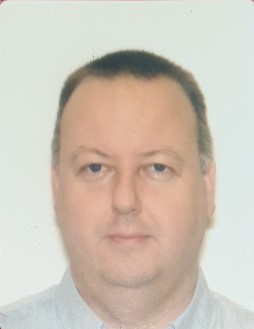|
Suppliers September Wednesday Webinars. Pete Starkey |
|
|
1.0 Introduction |
|
|
Neil Chamberlain |
2.0 Polar Instruments The series began on September 6th with Neil Chamberlain, Polar Instruments European Sales Manager, emphasising the importance of making the right decisions at the right time in the design process. Long recognised as a leading expert on signal integrity, and always happy to share his encyclopaedic knowledge of PCB stackup tools, modelling, testing, and documentation for impedance control and insertion loss, Chamberlain took the viewpoint of the PCB fabricator, a significant part of whose task was to predict the effects of his manufacturing process on the materials selected and the geometries chosen by the customer. Some of the decisions taken after the customer’s data had been received would affect the impedance. But so would some decisions already made, consequences of the limitations of the design and outside the control of the fabricator. Provided that there existed a good working relationship between fabricator and customer, there was an opportunity to use modelling tools and to discuss design parameters very early in the design phase. Some of the customer’s primary decisions were made well before commencing the layout: decisions about what would be the stack-up and what would be the trace geometries. Those decisions influenced what materials would be selected and how the board would be manufactured. Some of Polar’s tools for design and documentation of the stack-up could be used to help the customer make the right decisions at the right time in the design process. But when the fabricator had no prior involvement until the data arrived at the factory, and needed to carry out an analysis and maybe make dimensional adjustments in CAM before proceeding to manufacture, Polar had tools available to calculate the effect on impedance of those changes. The Si8000 was a quick-solver interface, which Chamberlain equated to a pocket calculator, simple and intuitive to use, but with some limitations. A more elaborate tool was Speedstack, which used parameters from a comprehensive materials library and not only predicted how the complete job would work in terms of impedance, but could output gerber data for a meaningful test coupon to be incorporated on the manufactured panel. Then, at the end of the manufacturing process, Polar’s test equipment could be used to verify that what had been calculated had actually been achieved, and to produce a report that could be sent to the customer. Chamberlain gave many application examples of the Si8000 tool, which offered a choice of about 120 different structures that might be required by the customer. He demonstrated a consequence of “getting it wrong” using two structures that appeared similar but where cores and prepregs were transposed with respect to impedance structures within the stack. One structure gave a calculated 70 ohms, the other gave 53 ohms. He explained how the Speedstack tool gave the operator the opportunity to decide what material would be used and how the stack was to be put together – effectively defining the rules of the stack so that the system could use this information and make the allocation of the impedance structures a straightforward procedure. Speedstack featured an on-line material library, Polar having established working relationships with most material manufacturers world-wide and listed all of their relevant material parameters in a consistent format. Therefore fabricators could use specific products from their preferred suppliers in the knowledge that all of those parameters were readily available and could be used directly by Speedstack. The tool analysed how the materials would behave in-process, including press thicknesses and effective local resin contents depending on the copper pattern characteristics of individual layers and how the stack had been put together. The completed stackup was presented in a report that could be exported in a choice of formats and, if required, used to advise the customer how it was intended to build the board. |
|
|
3.0 Ventec International Group What laminate to use? Leigh Allinson, Technical Sales Director at Ventec International Group, gave an update on Ventec’s extensive materials range, discussing properties and applications. He began with a brief review of the company’s history and growth, from the original Suzhou plant in 2000, the foundation of Ventec Europe in 2006, Ventec USA in 2007 and listing on Taiwan Stock Exchange in 2019, to its current position as a world leader in the production of high performance copper clad laminates and prepregs, with four manufacturing facilities in Asia and seven fully-equipped service centres across the globe, managed by a team of industry specialists from China, Taiwan, USA and Europe, with a focus on quality, technology, customer service and effective supply-chain management. Their whole supply chain was fully accredited to the aerospace quality standard AS9100. Allinson summarised Ventec’s product range which, besides standard FR4 and polyimide laminates and prepregs included materials for thermal management, signal integrity, RF/microwave and IC packaging, as well as for lead-free assembly. There was also a full range of Ventec halogen-free laminates and flex and flex-rigid materials. Ventec acted as distributors for thermal interface materials, lamination consumables, drill entry and exit materials, copper foils and Taiyo solder mask products. Allinson gave details of the tec-speed family of RF and high-speed digital materials, including PTFE ceramic, PTFE random glass fibre, and hydrocarbon ceramic with and without woven glass. He described Ventec’s polyimide range and showed the roadmap for tec-thermal thermal management laminates and prepregs. He continued his description of Ventec’s product families with the tec-pack series of IC package substrates, special applications materials, low-flow and no-flow prepregs and illustrated the properties of Ventec high-voltage anti-CAF laminates. To complement Ventec’s extensive range of materials, the group now incorporated Giga Solutions, a leading distributor of PCB manufacturing equipment, headed by Ramesh Dhokia who brought 25 years of experience in providing turnkey solutions. |
|
|
4.0 Isola Group The second in the Wednesday Webinar series, on September 13th, featured presentations on speciality laminates and engineering solutions. There is an increasing demand for non-PTFE and non-thermoplastic based substrates with dielectric properties similar to PTFE, with high glass transition temperatures and high thermal reliability, together with stable dielectric properties over a higher range of temperatures and frequencies. Jim Francey, RF Business Director Europe with Isola Group, described two low-loss materials from Isola’s extensive product portfolio: Astra MT77 for RF/microwave and I-Tera MT40 for high-speed digital designs. He explained that a remarkable characteristic of Astra MT77 was its ultra-low dissipation factor of 0.0017, which made it a cost-effective alternative to PTFE, especially in millimetre-wave radar for automotive applications, while offering straightforward PCB processing compatible with normal FR4 procedures, without the necessity for plasma treatment. It was not ceramic-loaded and therefore did not cause excessive drill wear. The material was based on a thermoset resin system and could be laminated using standard press cycles and mixed with FR4 and other materials in hybrid builds, being capable of multiple lamination cycles where necessary. Finished multilayers were CAF resistant and compatible with lead-free assembly. Francey illustrated the comprehensive range of cores and prepregs available, listing resin contents and glass styles, and using actual test results to demonstrate the consistency of dielectric constant and dissipation factor over frequencies from 2GHz to 20GHz, temperatures between -40°C and +140°C, and after long-term ageing at 125°C. The thermoset resin matrix exhibited very good adhesion to metals, enabling the use of copper with extremely smooth surfaces. He demonstrated the benefits of using HVLP foil which minimised loss and, in combination with accurate thickness control in the manufacture of core laminates, contributed to the uniformity of dielectric constant. Using the example of an 8-layer any-layer plated via construction for a cognitive-antenna radio system he commented that the thickness uniformity ensured that planarization could be carried out consistently and reliably. Concluding that Astra MT77 ultra-low-loss laminates and prepregs represented a breakthrough product for millimetre wave frequencies and beyond, Francey turned to his second featured material: I-Tera MT40, a next-generation family of very-low-loss laminates and prepregs, again exhibiting exceptional electrical properties, very stable over a broad frequency and temperature range, and particularly suitable for high-speed digital applications as well as RF/microwave designs. With its very low dissipation factor of 0.0028 – 0.0035, I-Tera MT40 offered a cost-effective alternative to PTFE with the added benefit of processing like FR4 and not requiring the special through-hole treatments associated with processing PTFE-based laminates. It also exhibited remarkably good thermal stability, as demonstrated by passing 1000 cycles of HATS testing with no failures. |
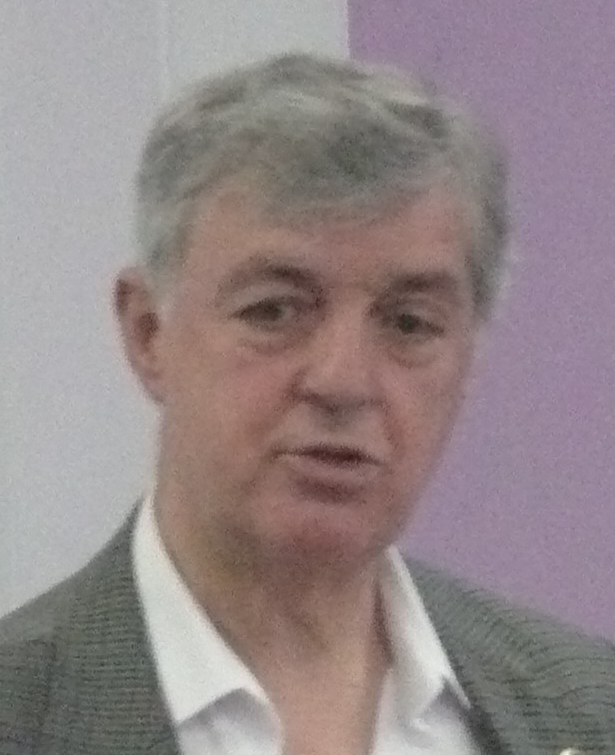 Gavin Barclay Gavin BarclayACS Industries |
5.0 ACS Industries “Forty-two years in the business of holes” was how Gavin Barclay, Commercial Director of ACS Industries, introduced his company which has been supplying carbide tools and providing contract drilling and routing services to UK printed circuit fabricators since 1981. He explained the company’s three main areas of operation: subcontract drilling, carbide tool supply and drill re-pointing. The drilling operation involved rather more than pressing the “cycle start” button, and Barclay explained the engineering procedure step-by-step from initial data input to final inspection. The term “subcontract drilling” represented much more than simply overload-capacity – there were many situations where customers had taken-on jobs that turned out to be more difficult than they had initially believed, whether in size or technology, and had turned to ACS as the experts in resolving their problems. ACS had full x-ray capability for inspection and measurement of drill registration on multilayers, and were prepared to work closely with individual customers to make scaling adjustments where permissible. The second part of ACS’s business was the supply of carbide cutting tools, with the largest stock of PCB tools in the UK and representing Union Tool, HAM and Performance Micro Tool, which gave ACS a very comprehensive range and the advantage of being able to supply off-the-shelf for next-day delivery, or consignment stock where required. Barclay described the different types of tool available, from micro-tools as fine as 0.05mm to 0.25mm, standard drills; undercut drills up to 1.6mm. He explained the differences between single-flute and parallel-flute drills, the latter becoming the more popular in the industry. Special slotting drills were more rigidly constructed for nibbling slots at the time of drilling, rather than as a separate routing operation. There were different types of router: diamond-cut and chip-breaker being most common, the former being more hard-wearing and the latter giving a finer surface finish. And there were several other formats available for special purposes. And the third main part of the business was drill re-pointing. Barclay described ACS’s equipment and inspection facilities, and showed lots of horror-story examples. But ACS obviously preferred to work with customers who supplied drills with controlled even wear that could be successfully re-pointed several times. He did remark that special-purpose laminates loaded with abrasive ceramic fillers contributed to rapid drill wear, and stressed the importance of establishing meaningful drilling machine parameters – different materials required different feeds, speeds and hit-counts. ACS had many years of experience running their own machines on which to base their in-house tool management procedures. ACS firmly believed that by working with them, either as a tool and re-point supplier or as a subcontract service provider, the fabricator could improve drill-shop productivity, hole-wall quality and positional accuracy, and make overall cost savings. |
|
Andre Bodegom |
6.0 Adeon Technologies The third in the Wednesday Webinar series, on September 20th, featured presentations from Adeon Technologies, specialist in the service and distribution of capital equipment for the European printed circuit board manufacturing market, and its parent group CCI Eurolam, multinational supplier of PCB laminates and process materials. Adeon’s MD, Andre Bodegom, began with the company’s mission statement which accentuated the philosophy of partnership with the European electronics industry, to enable its customers to meet their critical business objectives by providing solutions for the fabrication and assembly of professional electronics through hardware and software systems and services, all fully supported by its own service engineers. He added that Adeon constantly monitored and improved its own performance and had successfully built a track record of being a reliable and innovative partner to its customers. Based in the Netherlands, Adeon had been a professional supplier to the UK PCB market since 1992, with an emphasis on service performance, operator training and tailor-made predictive maintenance. Adeon had established sales and service partnerships with a long list of carefully selected suppliers. These included atg-LM electrical test systems, Boffotto plasma treatment systems, CIMS AOI systems, DIS Technology optical registration and bonding systems, Dynachem lamination and spray coating systems, LHS inkjet legend printing systems, Mach3La: x-ray registration drilling and x-ray inspection systems, Mass via filling and planarising systems, WISE wet process lines, Süss MicroTec inkjet soldermask systems, Ucamco CAM software solutions, photoplotters and direct imaging systems, and VF drill-stack preparation equipment, each with its dedicated engineering team. Adeon were also European sales partner for XACT-PCB process registration control, and service and sales partner for Benmayor automation solutions linked to the Adeon portfolio. |
|
Mark Gordon |
7.0 CCI Eurolam group Based in France, CCI Eurolam have been supplying the electronics manufacturing industry for 55 years, the original company having been founded over 100 years ago and still family-owned. The group had expertise in a wide array of electronics manufacturing technologies, covering the PCB fabrication and assembly industries, through ceramic circuits and printed electronics to semiconductors. It was active through a complex electronics ecosystem in the EMEA area, with business units in Germany, UK, Spain and Netherlands. Mark Gordon, Managing Director of the UK operation, explained that the group had 150 employees, including 35 sales engineers and 17 applications engineers, and the ability to communicate in 14 spoken languages. |
|
This was a very successful format and went down well with the attendees and presenters: |

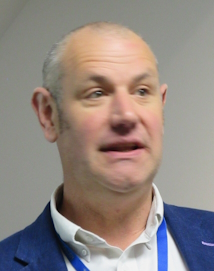
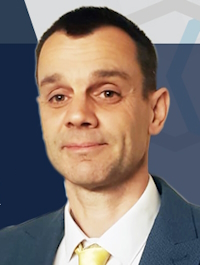 Leigh Allinson
Leigh Allinson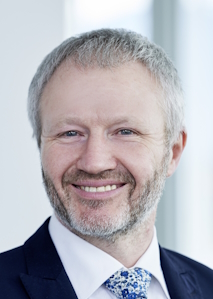 Jim Francey
Jim Francey
